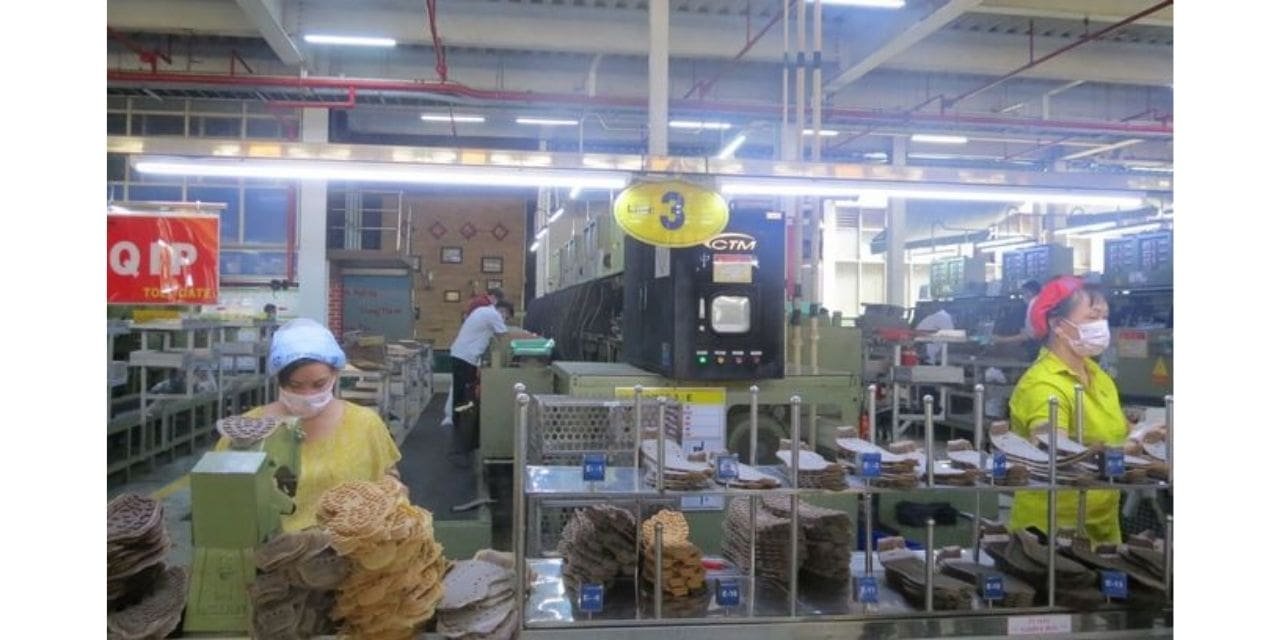Many businesses, particularly labor-intensive ones such as textile, garment, and leather, are likely to confront a labour shortage when operations resume after Covid-19. According to a study conducted in 300 enterprises in early September, only about 40% of their employees planned to return to work when the city reopened on Oct. 1.
According to a study conducted by the Ho Chi Minh City Union of Business Associations (HUBA), many planned to return after the Lunar New Year in early February next year. As per the Department of Labor, Invalids, and Social Affairs in Ho Chi Minh City, more than 500,000 migrant workers fled the authorities for their home cities as the city reduced lockdowns. Prior to the epidemic, the city employed approximately four million people across more than 286,000 firms, with 320,000 working in export processing zones, business estates, and one elevated park. The huge exodus has deprived labor-intensive businesses such as clothing, footwear, and leather, as well as commercial operations, of workers. It has compounded a situation aggravated by garment and textile employees fleeing to other industries in recent years, leaving the sector with at least a 10% shortage, according to Nguyen Thi Thuy, vice president of the Vietnam Textile and Apparel Union. Since Oct. 1, the shortfall has escalated to 30% as workers have fled the city, stayed at home to care for children since schools are closed, tested positive for Covid-19, or are in quarantine. Thuy thought that the sector would be able to hire people immediately because many service businesses were still closed and would not be fighting for labour. When the economy completely recovers, though, it will be difficult for the textile industry to attract more people. When the pandemic broke out in Khanh Hoa at the beginning of 2020, a textile firm owned by the Vietnam National Textile and Garment Group in Nha Trang discovered it simple to hire workers because tourism, hospitality, and culinary industries had closed according to thuy. When Covid burst out, more than 90% of factories were forced to halt production for three months as lockdowns were imposed, and workers were forced to go back to their home cities. Now that the epidemic is progressively being controlled and places are reopening, firms are still only allowed to resume on a moderate scale of 20-30%, posing a major risk of not being able to rehire personnel. “Enterprises will face a manpower shortage of roughly 30% if manufacturing fully restarts,” Xuan said, adding that the slower the reopening, the more difficult the situation. Many businesses that did not strive to retain personnel throughout the pandemic may face a worker shortage. Leather and associated items are the most affected industries, with 52 percent of enterprises reporting a shortage, followed by apparel (49 percent), electrical equipment (44 percent), textile (39.5 percent), and telecommunications, computers, and visual items (5.6 percent).
According to a study conducted by the Ho Chi Minh City Union of Business Associations (HUBA), many planned to return after the Lunar New Year in early February next year. As per the Department of Labor, Invalids, and Social Affairs in Ho Chi Minh City, more than 500,000 migrant workers fled the authorities for their home cities as the city reduced lockdowns. Prior to the epidemic, the city employed approximately four million people across more than 286,000 firms, with 320,000 working in export processing zones, business estates, and one elevated park. The huge exodus has deprived labor-intensive businesses such as clothing, footwear, and leather, as well as commercial operations, of workers. It has compounded a situation aggravated by garment and textile employees fleeing to other industries in recent years, leaving the sector with at least a 10% shortage, according to Nguyen Thi Thuy, vice president of the Vietnam Textile and Apparel Union. Since Oct. 1, the shortfall has escalated to 30% as workers have fled the city, stayed at home to care for children since schools are closed, tested positive for Covid-19, or are in quarantine. Thuy thought that the sector would be able to hire people immediately because many service businesses were still closed and would not be fighting for labour. When the economy completely recovers, though, it will be difficult for the textile industry to attract more people. When the pandemic broke out in Khanh Hoa at the beginning of 2020, a textile firm owned by the Vietnam National Textile and Garment Group in Nha Trang discovered it simple to hire workers because tourism, hospitality, and culinary industries had closed according to thuy. When Covid burst out, more than 90% of factories were forced to halt production for three months as lockdowns were imposed, and workers were forced to go back to their home cities. Now that the epidemic is progressively being controlled and places are reopening, firms are still only allowed to resume on a moderate scale of 20-30%, posing a major risk of not being able to rehire personnel. “Enterprises will face a manpower shortage of roughly 30% if manufacturing fully restarts,” Xuan said, adding that the slower the reopening, the more difficult the situation. Many businesses that did not strive to retain personnel throughout the pandemic may face a worker shortage. Leather and associated items are the most affected industries, with 52 percent of enterprises reporting a shortage, followed by apparel (49 percent), electrical equipment (44 percent), textile (39.5 percent), and telecommunications, computers, and visual items (5.6 percent).
Image source: https://e.vnexpress.net/

